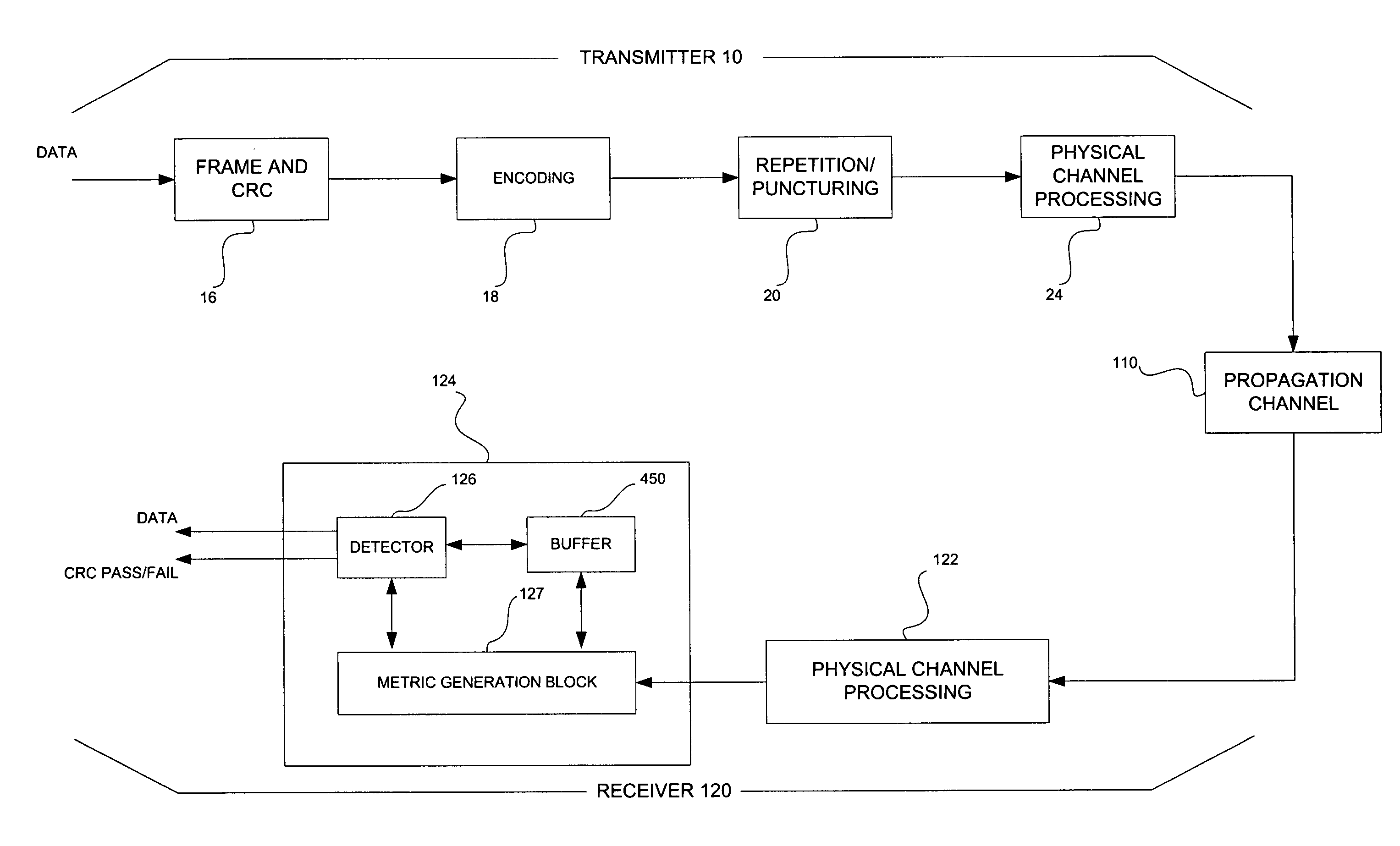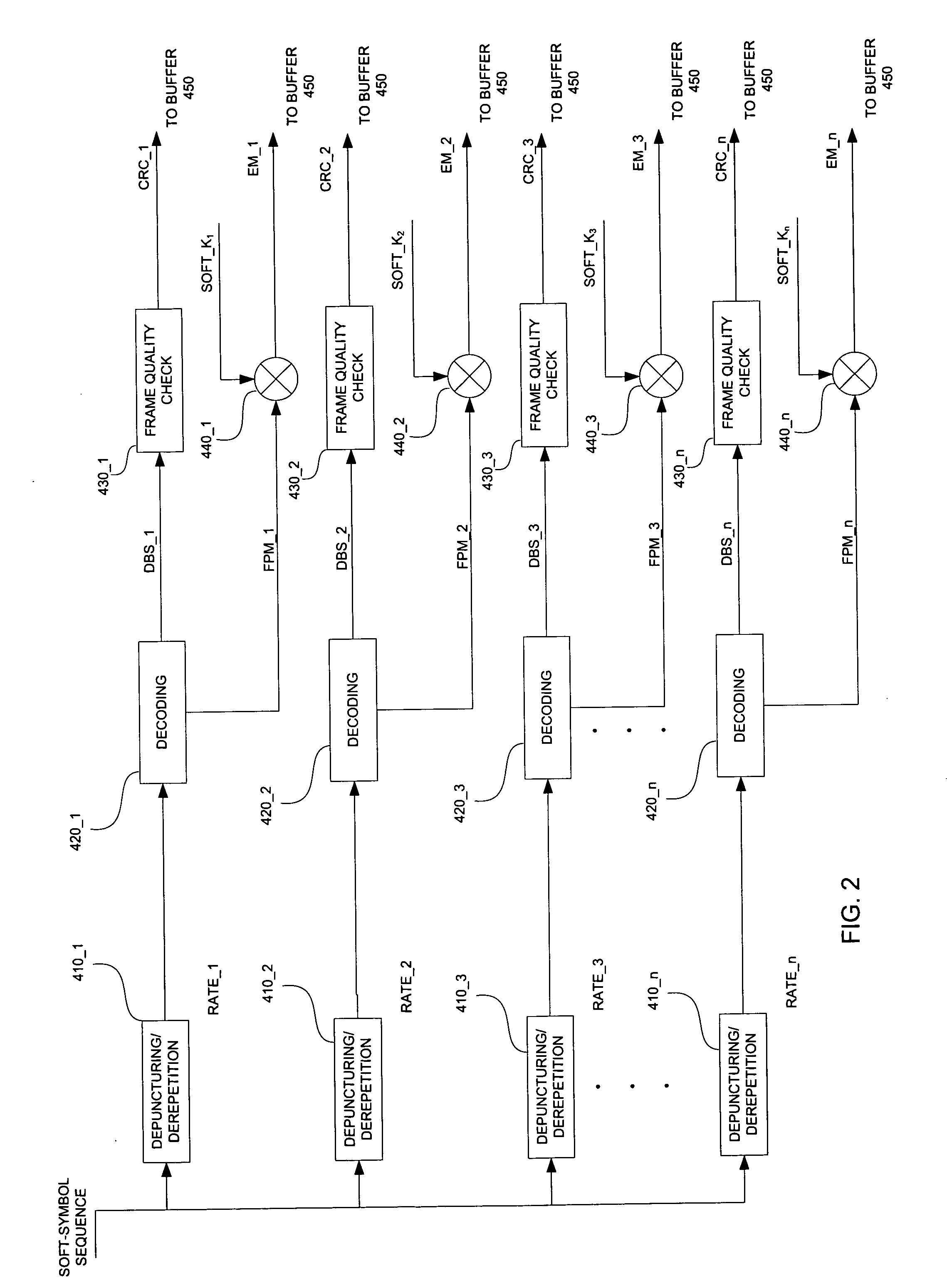Blind data rate identification for enhanced receivers
- Summary
- Abstract
- Description
- Claims
- Application Information
AI Technical Summary
Benefits of technology
Problems solved by technology
Method used
Image
Examples
Embodiment Construction
[0027]FIG. 1 illustrates a CDMA transmitter 10 and receiver 120 according to an example embodiment of the present invention. At the transmitter 10, a bit sequence representative of information (e.g., voice and / or data) may be input to a frame and CRC block 16. The frame and CRC block 16 may process the bit sequence in a known manner, and output the bit sequence partitioned into bit frames, for example, 20 ms in length and 16 bits long in RC1. Additionally, the bit sequence from the frame and CRC block 16 may have cyclic redundancy information (e.g., cyclic redundancy code (CRC) information), or any other suitable error detecting and correcting information, appended thereto. The output bit frame from the frame and CRC block 16 may have bit rates associated with a selected RC, for example, RC3 including 1.5, 2.7, 4.8 or 9.6 kilobits per second (kbps).
[0028] Alternatively, as will be appreciated by those having ordinary skill in the art, the bit frames produced by the frame and CRC bl...
PUM
 Login to View More
Login to View More Abstract
Description
Claims
Application Information
 Login to View More
Login to View More - R&D
- Intellectual Property
- Life Sciences
- Materials
- Tech Scout
- Unparalleled Data Quality
- Higher Quality Content
- 60% Fewer Hallucinations
Browse by: Latest US Patents, China's latest patents, Technical Efficacy Thesaurus, Application Domain, Technology Topic, Popular Technical Reports.
© 2025 PatSnap. All rights reserved.Legal|Privacy policy|Modern Slavery Act Transparency Statement|Sitemap|About US| Contact US: help@patsnap.com



